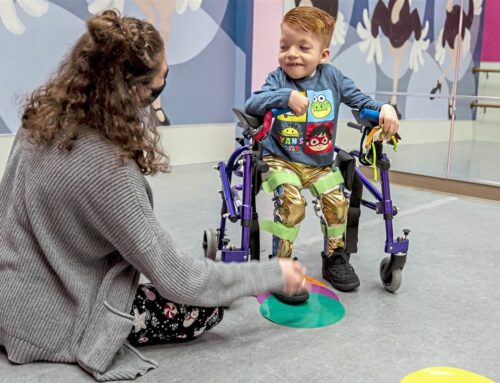Ava Allenberg sat in her wheelchair every week, watching her younger sister dance at Cynthia’s School of Dance in Ross. Though most eyes were fixed only on the dancers, a teacher, “Miss Sam” Skobel, kept noticing Ava.
Although nonverbal and with limited mobility due to cerebral palsy, Ava has a glint in her big blue eyes and gives a slight kick with both feet when she’s excited. Then there’s her smile, which no one can miss. Miss Sam — who’s working toward a master’s degree in education and has extensive experience with the special needs community — saw those reactions week after week and wondered if Ava might want to do some of her own dancing.
“I never really gave it a thought because not everyone is equipped to handle kids with disabilities,” Lauren Price, Ava’s mother, said. “Hearing about Miss Sam’s background, I said, ‘Yeah, we’ll take advantage of that opportunity.’ ”
For the past two years, Ava, 12, has been a private ballet student of Miss Sam’s. Last month, she appeared in her first recital, where her performance brought down the house.
“Our families at the dance studio, if you’d see how they cheer Ava on, everyone loves her to death,” said Cynthia Zurchin, director and owner of the dance school, which has a reputation for welcoming children with disabilities. “It just brings a nice family atmosphere, and kids learn at an early age that you help people and are accepting of people with differences.”
The performance has Miss Sam thinking back to Ava’s first class — an experience she crafted with the utmost care.
She consulted with physical and occupational therapists whom she knew from working with other special needs children. She talked to her dad, a nurse practitioner, and to her mom, who has a background in special education. They danced to a playlist full of Ava’s favorite Disney princess songs, especially those featuring Elsa from “Frozen.” And, as an icebreaker, they chatted about her favorite friend from school, an older boy named Jacob.
“I knew she’d be able to do more than people were giving her credit for,” said Miss Sam. “I saw it in her eyes. She had that look, that ballerina face.”
Ava loves to dress up, especially in her dance costumes. This one is burgundy with pink tulle, gemstones and a tiara that encircles a high ballerina’s bun. When they perform, Miss Sam turns Ava’s wheelchair, allowing her to pirouette and glide across the dance floor, like a Misty Copeland on wheels. Ava’s arms move through the air, often with assistance, because the muscles of her upper body tend to be more rigid. A year ago, Miss Sam would kneel down in front of Ava’s wheelchair and raise her palms to create targets for each pointed toe. But now, she only needs to stand at Ava’s side, occasionally tapping a knee as a reminder.
“The progress she has made is nothing short of a miracle,” said Ms. Zurchin, who has a Ph.D. in education. “I’ve never seen anyone work so hard at dance. We started calling her ‘Amazing Ava.’
Living with multiple disabilities, most of Ava’s school time is therapy-based. While dance has assisted in those goals — stretching muscles and providing incentive for independent movement — it stands out because “it isn’t just work.”
“When we go to dance, kids smile and talk to her,” Ms. Price said. “She likes being a part of something.”
On recital night, Miss Sam wore a black leotard and tights, doing her best to fade into the background. Ava raised her legs without assistance and smiled so brightly it rivaled the stage lights.
“I’m really lucky to be there with her,” said Miss Sam. “She’s the star. I’m just a prop. She’s the dancer.”
Abby Mackey: [email protected], Twitter @AnthroAbbyRN and Instagram @abbymackeywrites.







